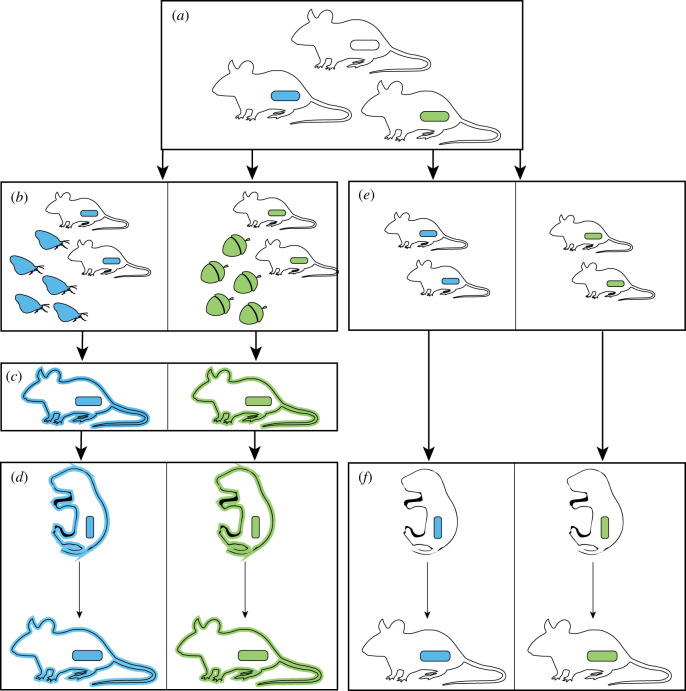Figure 4.
Potential pathways towards evolutionary dependence on a specific gut microbiota. Initial variation in gut microbiota composition within a species, denoted by coloured capsules (a), may generate differential fitness of lineages within the species in the presence of different food resources, denoted by coloured moths and acorns (b). Selection to retain ecological benefits of microbial associations may lead to the evolution of adaptive host mechanisms designed to maintain specific microbiotas, denoted by matching colours of host outlines and capsules (c). As the associations persist over evolutionary time, postnatal developmental processes may evolve to integrate signals from the specific microbiotas (d). Alternatively, host-lineage specific gut microbiotas can be evolutionarily integrated into host development even if the gut microbiotas have no effect on host fitness originally (e,f). Both pathways (a–d) and (a,e,f) can lead to deleterious effects on hosts if the symbiotic associations are disrupted.

